Born in Cesena, 1941.
Interview La fotografia come linguaggio vernacolare: intervista a Guido Guidi, autore di « Veramente » in mostra alla Fondazione Henri Cartier-Bresson di Parigi Interview La photographie comme langage vernaculaire : entretien avec Guido Guidi, qui présente « Veramente » à la Fondation Henri Cartier Bresson Livre Guido Guidi / Vitaliano Trevisan - Vol. I Livre Guido Guidi. In Between Cities - An Itinerary through Europe 1993/1996 Festival What to See at Fotografia Europea 2016 Festival Internationaal Fotofestival Knokke-Heist Exposition Exposition : « Col tempo » de Guido Guidi Exposition « Veramente » : an exhibition by Guido Guidi at Huis Marseille Exposition La Fondation Henri Cartier-Bresson présente « Veramente », une exposition de Guido Guidi Exposition Arbeit/Labour - Set 7 from the collection and Archive of the Fotomuseum Winterthur Exposition Guido Guidi - La tombe Brion de Carlo Scarpa 1997-2007 Exposition Kaléidoscope d'Italie Exposition Guido Guidi - Orte und Raüme | Luoghi e Spazi Modifier l'image
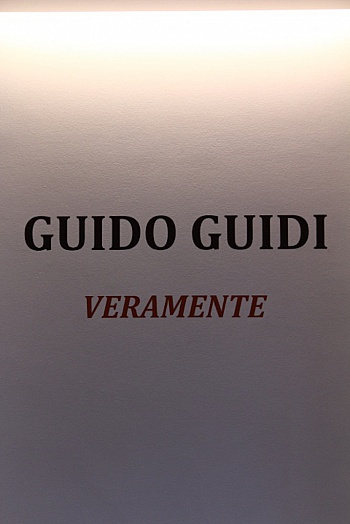 Guido Guidi è uno dei maggiori rappresentanti della fotografia italiana contemporanea. Negli anni '60, dopo aver studiato architettura allo IUAV di Venezia, decide di dedicarsi alla fotografia, in cui individua un mezzo immediato e diretto per indagare ciò che si trova ai margini dello sguardo.
L'interesse per la parola e la fotografia come medium porta Guido Guidi ad adottare un linguaggio vernacolare - come lui stesso lo definisce - per documentare le trasformazioni del paesaggio contemporaneo.
Influenzato dal Neorealismo, dalla Scuola italiana di paesaggio e dai Nuovi Topografi, Guido Guidi rivolge il suo obiettivo verso i luoghi periferici e gli spazi interstiziali, in cui le tracce umane, laddove presenti, testimoniano di quotidianità ordinarie e banali.
L'approccio tecnico ...
Guido Guidi è uno dei maggiori rappresentanti della fotografia italiana contemporanea. Negli anni '60, dopo aver studiato architettura allo IUAV di Venezia, decide di dedicarsi alla fotografia, in cui individua un mezzo immediato e diretto per indagare ciò che si trova ai margini dello sguardo.
L'interesse per la parola e la fotografia come medium porta Guido Guidi ad adottare un linguaggio vernacolare - come lui stesso lo definisce - per documentare le trasformazioni del paesaggio contemporaneo.
Influenzato dal Neorealismo, dalla Scuola italiana di paesaggio e dai Nuovi Topografi, Guido Guidi rivolge il suo obiettivo verso i luoghi periferici e gli spazi interstiziali, in cui le tracce umane, laddove presenti, testimoniano di quotidianità ordinarie e banali.
L'approccio tecnico ...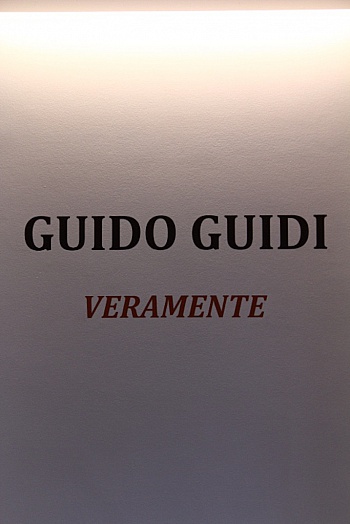 Guido Guidi est l'une des figures majeures de la photographie italienne contemporaine. Formé à l'architecture à l'Institut Universitaire d'Architecture de Venise, il s'est tourné vers la photographie dans les années 1960, en y découvrant un moyen direct, sobre et fidèle au réel pour interroger tout ce qui reste en marge du regard.
Très attentif à la parole et à la photographie en tant que médiums, Guido Guidi choisit un langage « vernaculaire », comme il le définit, pour documenter les transformations du paysage contemporain. Influencé par le cinéma néoréaliste, les Nouveaux Topographes et l'Ecole Italienne du Paysage, Guido Guidi a porté son attenti...
Guido Guidi est l'une des figures majeures de la photographie italienne contemporaine. Formé à l'architecture à l'Institut Universitaire d'Architecture de Venise, il s'est tourné vers la photographie dans les années 1960, en y découvrant un moyen direct, sobre et fidèle au réel pour interroger tout ce qui reste en marge du regard.
Très attentif à la parole et à la photographie en tant que médiums, Guido Guidi choisit un langage « vernaculaire », comme il le définit, pour documenter les transformations du paysage contemporain. Influencé par le cinéma néoréaliste, les Nouveaux Topographes et l'Ecole Italienne du Paysage, Guido Guidi a porté son attenti...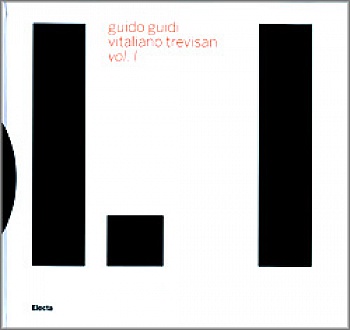 curated by Antonello Frongia 28x30cm, 96pp, 48 4-color photographs, with a short story by Vitaliano Trevisan and a note by Antonello Frongia. Graphic design by Leonardo Sonnoli. Published by Electa/Jarach Gallery, 2006 These forty-eight photographs by Guidi carry on a study of the Seventies, which defined domestic spaces as places of shadows and lights and the house as the dark room of existence. Guidi renews his "travel around my room", "interiorizing" landscape surfaces through a geographic, biographic and metaphoric meditation. The world itself is seen as a photograph, sensitive material animated by the light that runs through it. The author searches for the different qualities of light that changes colour on a wall or on a person's skin. He questions the palimpsest of signs and writings in a subwa...
curated by Antonello Frongia 28x30cm, 96pp, 48 4-color photographs, with a short story by Vitaliano Trevisan and a note by Antonello Frongia. Graphic design by Leonardo Sonnoli. Published by Electa/Jarach Gallery, 2006 These forty-eight photographs by Guidi carry on a study of the Seventies, which defined domestic spaces as places of shadows and lights and the house as the dark room of existence. Guidi renews his "travel around my room", "interiorizing" landscape surfaces through a geographic, biographic and metaphoric meditation. The world itself is seen as a photograph, sensitive material animated by the light that runs through it. The author searches for the different qualities of light that changes colour on a wall or on a person's skin. He questions the palimpsest of signs and writings in a subwa... edited by: Marco Venturi, Antonello Frongia publication: Electa 2004 texts by: Louise Désy Antonello Frongia Roberta Valtorta Marco Venturi A photographic itinerary along the ancient route between Russia and Santiago de Compostela. Research conducted by the photographer Guido Guidi in France, Germany, Poland, Russia and Spain, from 1993 to 1996 to document the new urban development after the fall of the Berlin Wall. The volume includes essays on the forms of urban development in contemporary Europe and the evolution of relations between photographic culture and urban culture in the 1800s and 1900s. Language: Bilingual Italian/English Total pages: 176 Color Illustrations: 148 Format: 32 X 24...
edited by: Marco Venturi, Antonello Frongia publication: Electa 2004 texts by: Louise Désy Antonello Frongia Roberta Valtorta Marco Venturi A photographic itinerary along the ancient route between Russia and Santiago de Compostela. Research conducted by the photographer Guido Guidi in France, Germany, Poland, Russia and Spain, from 1993 to 1996 to document the new urban development after the fall of the Berlin Wall. The volume includes essays on the forms of urban development in contemporary Europe and the evolution of relations between photographic culture and urban culture in the 1800s and 1900s. Language: Bilingual Italian/English Total pages: 176 Color Illustrations: 148 Format: 32 X 24...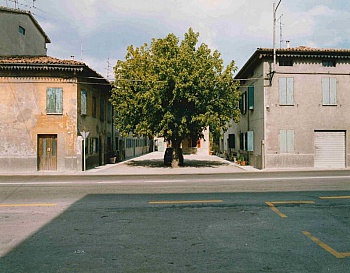 The 11th edition of the Fotografia Europea international festival of photography promises to be one of the biggest and best yet, with a program of exhibitions, conferences, performances, educational initiatives, and other events taking place throughout the Municipality of Reggio Emilia in Northern Italy from May 6 through July 10, 2016.
The theme of Fotografia Europea 2016, “The Via Emilia. Roads, Journeys, Borders,” is focused on the topic of roads, starting from what the curators of the festival describe as “the major Roman road that runs ‘from the river to the sea’” and extending to “the byways of the world, the places of transit, and borders in today’s society.”
© Walker Evans Street in Bethlehem, Penn. Data: 1935 Data stampa: 1972 CSAC, Universit...
The 11th edition of the Fotografia Europea international festival of photography promises to be one of the biggest and best yet, with a program of exhibitions, conferences, performances, educational initiatives, and other events taking place throughout the Municipality of Reggio Emilia in Northern Italy from May 6 through July 10, 2016.
The theme of Fotografia Europea 2016, “The Via Emilia. Roads, Journeys, Borders,” is focused on the topic of roads, starting from what the curators of the festival describe as “the major Roman road that runs ‘from the river to the sea’” and extending to “the byways of the world, the places of transit, and borders in today’s society.”
© Walker Evans Street in Bethlehem, Penn. Data: 1935 Data stampa: 1972 CSAC, Universit...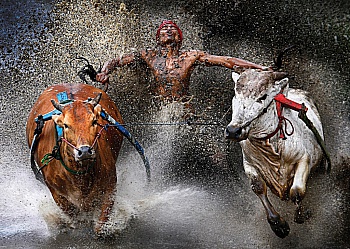 Du 24 mars au 9 juin 2013, le Fotofestival de Knokke-Heist présente la sélection du PixSea Award. Ce nouveau prix international de la photographie a été mis sur pied par la commune de Knokke-Heist, afin de renforcer sa position de plateforme effervescente et professionnelle de la photographie.
Le PixSea Award, dont la coordination est assurée par la commissaire Inge Henneman, compte deux volets, que les visiteurs pourront découvrir à travers une exposition de qualité muséale. Un premier prix consacre le parcours d’un photographe (Œuvre Award). Il est décerné cette année au photographe et architecte italien Guido Guidi (1941). Le second prix récompense un photographe émergeant (Emerging Artist Award). Sept photographes ont été présélectionnés par le jury pour ce...
Du 24 mars au 9 juin 2013, le Fotofestival de Knokke-Heist présente la sélection du PixSea Award. Ce nouveau prix international de la photographie a été mis sur pied par la commune de Knokke-Heist, afin de renforcer sa position de plateforme effervescente et professionnelle de la photographie.
Le PixSea Award, dont la coordination est assurée par la commissaire Inge Henneman, compte deux volets, que les visiteurs pourront découvrir à travers une exposition de qualité muséale. Un premier prix consacre le parcours d’un photographe (Œuvre Award). Il est décerné cette année au photographe et architecte italien Guido Guidi (1941). Le second prix récompense un photographe émergeant (Emerging Artist Award). Sept photographes ont été présélectionnés par le jury pour ce...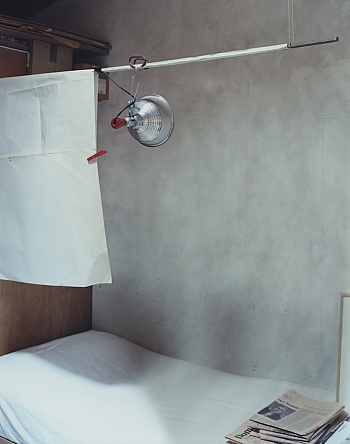 Communiqué de presse
Guido Guidi (né en 1941 à Cesena, à proximité de Ravenna) étudie au Corso Superiore di Disegno Industriale et à l’Istituto Universitario di Architettura di Venezia (IUAV). Après avoir expérimenté l’outil photographique, il s’y consacre entièrement et devient l’une des figures majeures de la photographie contemporaine italienne.
Dans sa maison de Ronta, case de départ ou source d’inspiration, croît une impressionnante archive. Pour nourrir son oeuvre, il puise à de multiples sources, celles de l’histoire de la peinture, de l’architecture, de la photographie. De l'architecture contemporaine à la peinture de la Renaissance en passant par le...
Communiqué de presse
Guido Guidi (né en 1941 à Cesena, à proximité de Ravenna) étudie au Corso Superiore di Disegno Industriale et à l’Istituto Universitario di Architettura di Venezia (IUAV). Après avoir expérimenté l’outil photographique, il s’y consacre entièrement et devient l’une des figures majeures de la photographie contemporaine italienne.
Dans sa maison de Ronta, case de départ ou source d’inspiration, croît une impressionnante archive. Pour nourrir son oeuvre, il puise à de multiples sources, celles de l’histoire de la peinture, de l’architecture, de la photographie. De l'architecture contemporaine à la peinture de la Renaissance en passant par le...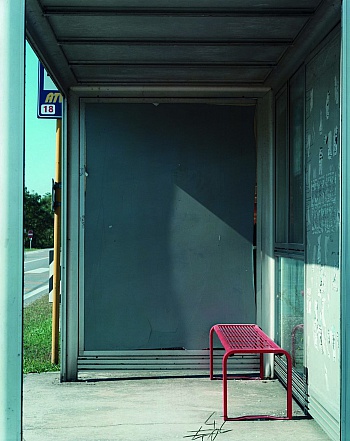 Guido Guidi (born in 1941, in Cesena, north-eastern Italy) had originally wanted to be an architect or a painter, but during his studies at the University of Venice he began to develop an interest in photography. By the mid-1960s he had devoted himself entirely to photography. Guidi directs his camera towards urban architecture, industrial landscapes, and periurban environments in an entirely original way. His approach is poetic and attentive, and could also be said to be descriptive in nature. His photographic work has given rise to a rich visual archive of the landscape of Italy, both natural and man-made. In 2013 Guido Guidi won the prestigious PixSea Oeuvre Award, resulting in his international breakthrough.
© Guido Guidi
For Guido Guidi photography is a way of life and the ...
Guido Guidi (born in 1941, in Cesena, north-eastern Italy) had originally wanted to be an architect or a painter, but during his studies at the University of Venice he began to develop an interest in photography. By the mid-1960s he had devoted himself entirely to photography. Guidi directs his camera towards urban architecture, industrial landscapes, and periurban environments in an entirely original way. His approach is poetic and attentive, and could also be said to be descriptive in nature. His photographic work has given rise to a rich visual archive of the landscape of Italy, both natural and man-made. In 2013 Guido Guidi won the prestigious PixSea Oeuvre Award, resulting in his international breakthrough.
© Guido Guidi
For Guido Guidi photography is a way of life and the ...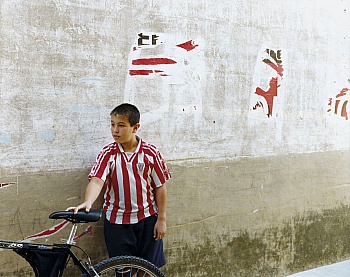 « Quand je photographie quelque chose, je suis cette chose...comme si je priais »
La Fondation Henri Cartier-Bresson présente une importante exposition de Guido Guidi, figure majeure de la photographie contemporaine italienne, qui considère la photographie comme un prolongement du regard, une manière de vivre. Pour la première fois en France, les quarante ans de carrière du photographe, pionnier du renouveau de la photographie du territoire, sont retracés. Sur deux étages, les expérimentations en noir et blanc des années soixante-dix côtoient les séries couleur emblématiques telles que « In between cities », « A New map of Italy » ou « Preganziol ».
Silvia Cesena, 2002, Italie © Guido Guidi
Né en 1941 à C...
« Quand je photographie quelque chose, je suis cette chose...comme si je priais »
La Fondation Henri Cartier-Bresson présente une importante exposition de Guido Guidi, figure majeure de la photographie contemporaine italienne, qui considère la photographie comme un prolongement du regard, une manière de vivre. Pour la première fois en France, les quarante ans de carrière du photographe, pionnier du renouveau de la photographie du territoire, sont retracés. Sur deux étages, les expérimentations en noir et blanc des années soixante-dix côtoient les séries couleur emblématiques telles que « In between cities », « A New map of Italy » ou « Preganziol ».
Silvia Cesena, 2002, Italie © Guido Guidi
Né en 1941 à C...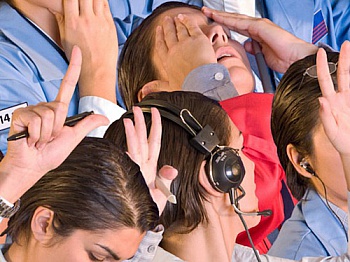 We each relate to work in our own personal way. We may be employed or self employed; we may have just entered the workforce and have specific goals or we may be enjoying well-earned retirement. Working to earn a living is a salient feature of bourgeois society. It defines social status and belonging, while unemployment and not working bears the menace of being ostracized. From its earliest beginnings, photography has captured how, where and under what conditions people work – not only by in-house photographers, adhering to the perspective and specifications of the management but also by freelance photographers with an open-ended, unfiltered approach to places of production and trade. In both content and motif, the exhibition “Arbeit/Labour” traces the transition from physical labour to automa...
We each relate to work in our own personal way. We may be employed or self employed; we may have just entered the workforce and have specific goals or we may be enjoying well-earned retirement. Working to earn a living is a salient feature of bourgeois society. It defines social status and belonging, while unemployment and not working bears the menace of being ostracized. From its earliest beginnings, photography has captured how, where and under what conditions people work – not only by in-house photographers, adhering to the perspective and specifications of the management but also by freelance photographers with an open-ended, unfiltered approach to places of production and trade. In both content and motif, the exhibition “Arbeit/Labour” traces the transition from physical labour to automa... Le CCA revisite un chef-d’oeuvre de l’architecte Carlo Scarpa dans le cadre d’une exposition consacrée au photographe Guido Guidi.
Le Centre Canadien d’Architecture choisit de revisiter un chef-d’oeuvre de l’architecture par le biais de l’exposition intitulée La tombe Brion de Carlo Scarpa : photographies de Guido Guidi, 1997–2007, consacrée au photographe italien Guido Guidi et présentée du 11 septembre 2009 au 10 janvier 2010, dans la salle octogonale du CCA. Guido Guidi explore les notions de temps, d’espace et de lumière dans son essai photographique sur le mausolée de la famille Brion en Italie, considéré comme le chefd’oeuvre de l’architecte Carlo Scarpa. Depuis longtemps séduit p...
Le CCA revisite un chef-d’oeuvre de l’architecte Carlo Scarpa dans le cadre d’une exposition consacrée au photographe Guido Guidi.
Le Centre Canadien d’Architecture choisit de revisiter un chef-d’oeuvre de l’architecture par le biais de l’exposition intitulée La tombe Brion de Carlo Scarpa : photographies de Guido Guidi, 1997–2007, consacrée au photographe italien Guido Guidi et présentée du 11 septembre 2009 au 10 janvier 2010, dans la salle octogonale du CCA. Guido Guidi explore les notions de temps, d’espace et de lumière dans son essai photographique sur le mausolée de la famille Brion en Italie, considéré comme le chefd’oeuvre de l’architecte Carlo Scarpa. Depuis longtemps séduit p...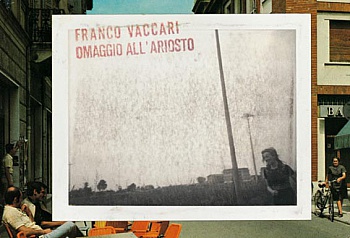 Kaléidoscope d'Italie is a compilation of the work of 32 photographers which relates the history of Italian photography from the '50s to the present day. In bringing together several generations of photographers - selected for the importance of their photographic research, their sensibilities and their different approaches - this exhibition gives a broad view of Italian photographic culture with all the wealth that it has to offer.
The relationship between art and photography is a complex one and for the first decades of the period in question two different approaches existed side by side: one artistic, the other documentary. A constructive dialogue between them proved to be difficult as they did not share any common ground.
From the '60s onwards, international artistic influences began to gain in importance...
Kaléidoscope d'Italie is a compilation of the work of 32 photographers which relates the history of Italian photography from the '50s to the present day. In bringing together several generations of photographers - selected for the importance of their photographic research, their sensibilities and their different approaches - this exhibition gives a broad view of Italian photographic culture with all the wealth that it has to offer.
The relationship between art and photography is a complex one and for the first decades of the period in question two different approaches existed side by side: one artistic, the other documentary. A constructive dialogue between them proved to be difficult as they did not share any common ground.
From the '60s onwards, international artistic influences began to gain in importance...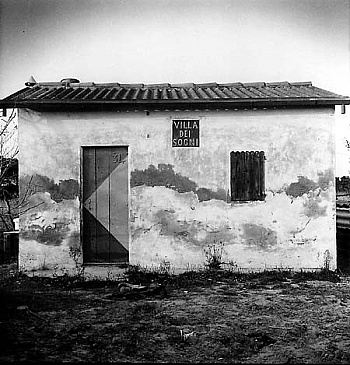 [german text in below]
Städtische Galerie Wolfsburg
Schlossstraße 8, 38448 Wolfsburg, DE
20 maggio – 2 settembre 2007
vernissage: 19 maggio 2007, ore 18
interverranno:
Dr. Susanne Pfleger, curatrice della mostra
Dr. Antonio Cardelli, Console Onorario ad Hannover
introduce:
Thomas Seeling, Fotomuseum Winterthur
Guido Guidi sarà presente
Si inaugura il 19 maggio 2007 alle ore 18, presso la Städtische Galerie Wolfsburg, Schlossstraße 8, Wolfsburg, Germania, la retrospettiva del fotografo Guido Guidi "Orte und Räume|Luoghi e Spazi", promossa dall'Istituto Italiano di Cultura e dalla Städtische Galerie Wolfsburg. La mostra rappresenta la prima personale tedesca di Guido Guidi (Cesena, 1941), autore che assume una posizione-chiave nell'ambito della fotografia italiana e non solo. ...
[german text in below]
Städtische Galerie Wolfsburg
Schlossstraße 8, 38448 Wolfsburg, DE
20 maggio – 2 settembre 2007
vernissage: 19 maggio 2007, ore 18
interverranno:
Dr. Susanne Pfleger, curatrice della mostra
Dr. Antonio Cardelli, Console Onorario ad Hannover
introduce:
Thomas Seeling, Fotomuseum Winterthur
Guido Guidi sarà presente
Si inaugura il 19 maggio 2007 alle ore 18, presso la Städtische Galerie Wolfsburg, Schlossstraße 8, Wolfsburg, Germania, la retrospettiva del fotografo Guido Guidi "Orte und Räume|Luoghi e Spazi", promossa dall'Istituto Italiano di Cultura e dalla Städtische Galerie Wolfsburg. La mostra rappresenta la prima personale tedesca di Guido Guidi (Cesena, 1941), autore che assume una posizione-chiave nell'ambito della fotografia italiana e non solo. ...